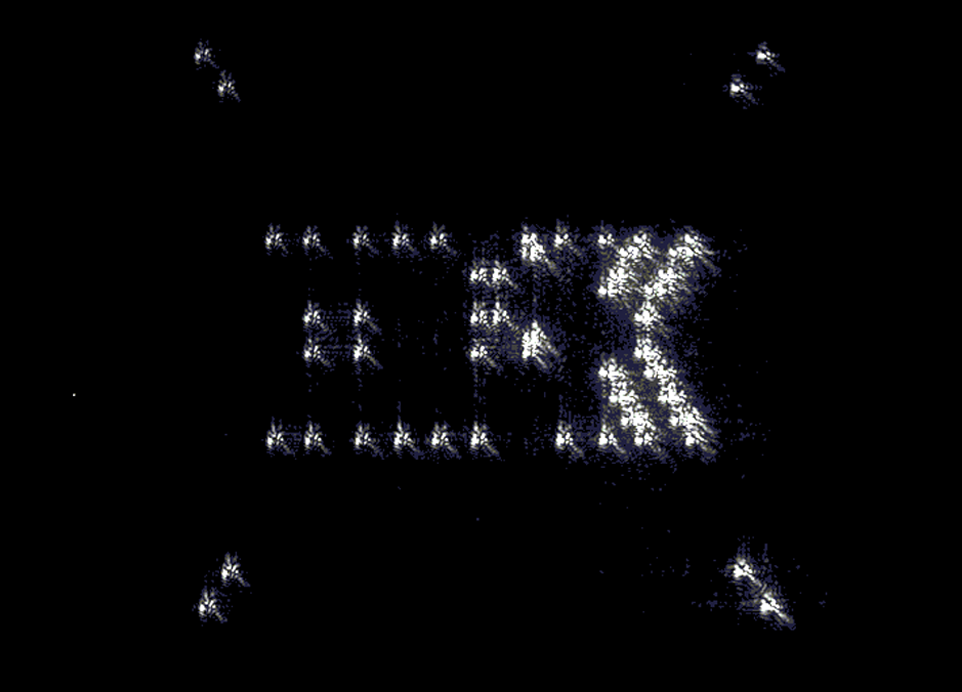🧪 Abstract
Optical Tweezers have shown promise in the manipulation of individual atoms, with their application to Quantum Computing being of particular interest. Using a Liquid Crystal on Silicon Spatial Light Modulator (LCOS-SLM) and an Infrared Laser, control over the projections onto the image plane was achieved. This opened the door for the generation of arrays with controlled spacing and resolution which could be used to pin atoms at specific positions and depths with respect to each other. The LCOS-SLM was limited in that it could only vary the phase of incoming light, which led to the loss of information without amplitude control. Future work on this project would focus on minimizing loss by implementing an iterative algorithm that finds a Fourier Transform that more closely matches the desired image.
▶️ Research Presentation
⚙️ Extended Abstract
The Spatial Light Modulator (SLM) had varying levels of current run through each of the individual 1,302,528 pixels of its screen. Each pixel contained a stack of silicon crystals that tilted to varying degrees with respect to the screen plane in direct response to the strength of the current. Light passing through pixels with tilted crystals takes a decreasing amount of time proportional to the angle of tilt to pass through and be reflected, which results in the retardation of that light’s phase.
The SLM was connected to a computer as if it were a second display screen, with each pixel on the SLM screen corresponding to one pixel of the computer’s display. The amount of current run through the silicone crystals of an SLM pixel was dependent on the color displayed on the corresponding display pixel, with 255 options in grayscale. 0 being black and 255 being white, both corresponding to silicone crystals parallel to the SLM screen.
The process of finding what to display on the computer to modulate the phase of an incoming infrared beam in such a way that it generated the desired output on the image plane was done through a simple Fourier Transform. The transformation into Fourier pace was done using the numpy python library, but as Fourier Transformations depend on the modulation of frequency, phase, and amplitude, the inability of our SLM to modulate the latter of the outgoing wavefront resulted in the loss of information.
To correct for the information loss, the “Gerchberg-Saxton” iterative algorithm was used to converge towards a closer match to our target. This approach began with a random start that was shaped into the target over iterations, typically converging very early on and reproducing the fuller lines of the target image.




